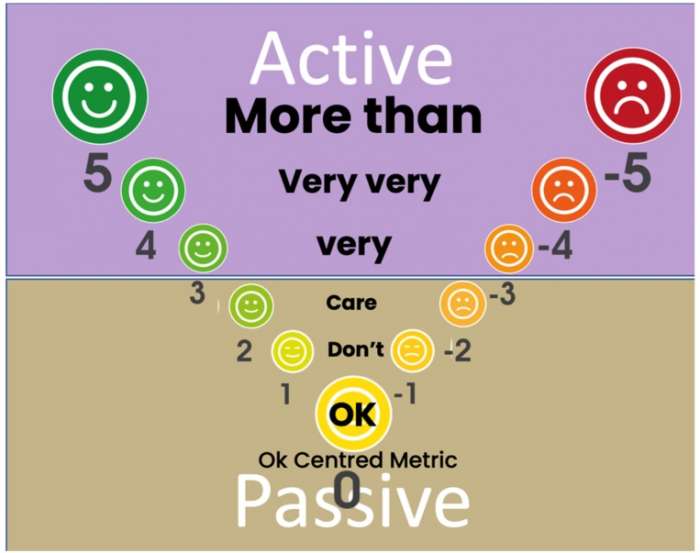
It’s often the case that customer satisfaction is measured by a survey that gives the level of satisfaction a numerical rating, like between 1 and 10. But emotions are not linear, so this form of measurement may be entirely misleading.
Do you really know how to understand what your client is feeling?
In a thought-provoking piece in My Customer (a UK based B2B publication) customer experience consultant Morris Pentel explains the standard ways of measuring satisfaction could be way off the mark. He says:
I think the general position of the customer experience industry is we think that emotions are important to the bottom line, but we really can’t understand them properly. This position has fuelled a general approach over the last 30 years creating a world of bad processes and worse customer surveys. It has led us to a world of Net Promoter Score (NPS), customer satisfaction (CSAT), customer effort score (CES), etc
From research undertaken by his firm he questions whether the usual approaches to measure customer satisfaction actually make any inroads to really understand the emotions of our clients.
Management likes to have an easy number to analyse (like the Net Promoter Score) but does that capture all that we need to know about the preceding event that influenced that rating from the customer?
So what’s that got to do with sales?
A lot actually.
From many years experience working in B2B sales roles as well as working with leading B2B sales teams I suggest there is a lot to consider from a professional selling perspective. The emotional state of clients (and prospects) clearly has an impact on how we need to work with them, and their degree of readiness to listen to what we – as the seller – have to say.
Emotional states are passive or active, not linear
One of the key takeaways from the My Customer article is the concept that an emotional state (such as satisfaction) is passive or active, and if ‘active’ then it is a question of degree, positive or negative. And that sort of outcome doesn’t fit on the usual linear 1-10 customer satisfaction feedback scale.
In fact Pentel provides a graduated scale for measuring satisfaction that moves from very active “more than” satisfied, through a passive “OK” zone and then into a negative “more than” dissatisfied.

Now, considering this from a sales perspective, knowing that your customer is satisfied is clearly not enough. We need to know where they sit on the scale of OK, don’t care, very, very very, or more than.
Pentel suggests that analysing conversation is the best way to gauge this degree of satisfaction, rather than relying on a survey tool that provides a linear measure. His methodology (business model) is to analyse a large collection of recorded conversations.
However, I believe a similar benefit can be obtained by experienced sellers as they often have the same, or very similar, conversations with many many clients. This repetition can be very helpful.
The challenge for sellers
I see the main challenge here for sellers (and their managers who need to encourage and support this approach) is to fully reflect on what they are actually hearing from the client, including pauses, the actual words used, and the tone of voice. It’s often the case that a seller will overlook these factors in the rush to progress or close the sale (they ignore the signals given by the client).
In effect, overlooking these characteristics and patterns of conversation means that the listener (the seller) is not really listening to understand, they are listening to reply (yes, that line is borrowed from the late Dr Stephen Covey).
Effective listening is an art form
Thinking about conversation analysis, and the discipline required to consider each component whether spoken or non-verbal (including silence) elevates the act of listening to an art form.
The question every seller and sales team leader needs to ask is:
What is the best way to understand the emotional experience of customers?
For further insights into the field of conversation analysis watch this TEDx talk.



